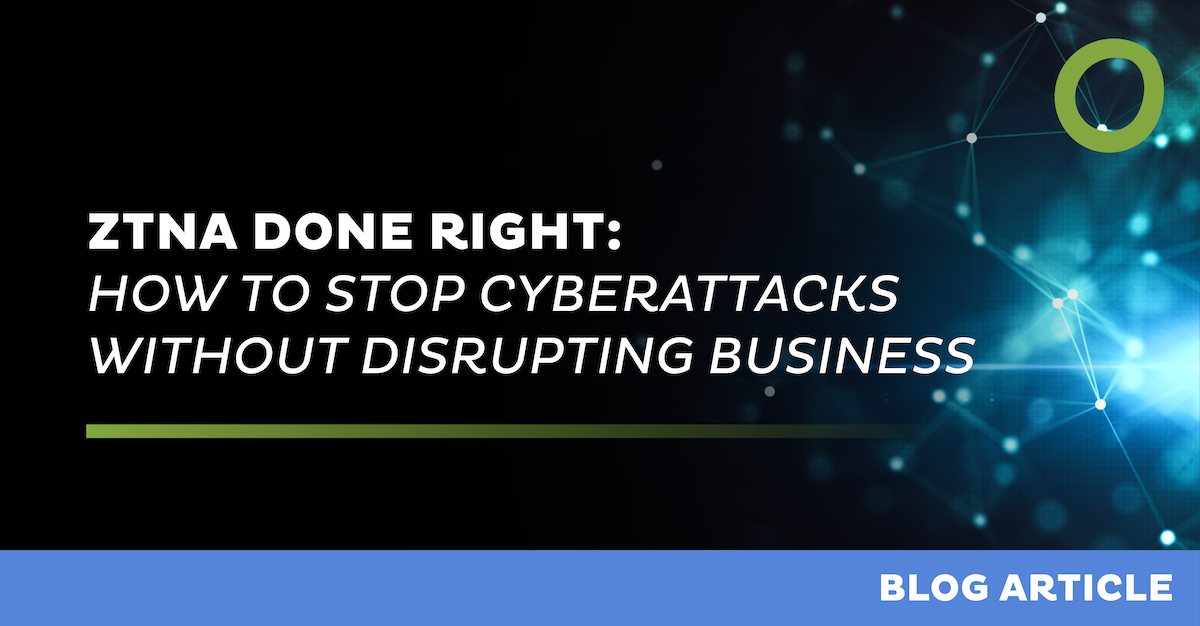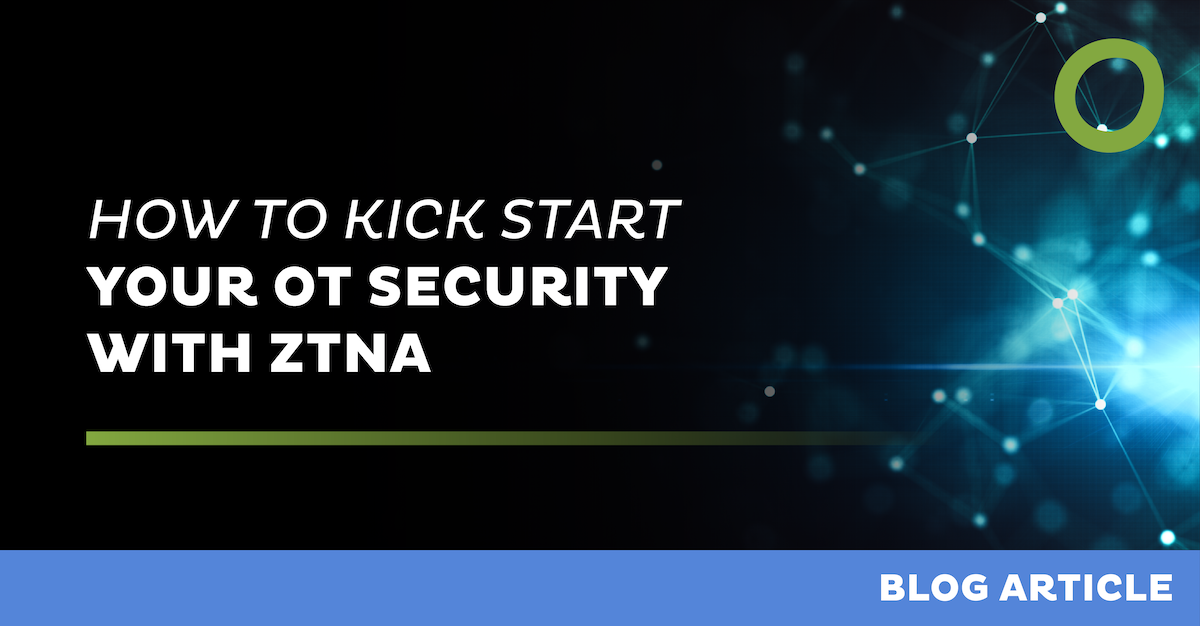
ZTNA Done Right: How to Stop Cyberattacks Without Disrupting Business


For years, “Zero Trust,” with ZTNA (Zero Trust Network Access) as its frontline technology, has been hailed as a game-changer in cybersecurity. It promises to shrink the attack surface by eliminating implicit trust and enforcing continuous verification. Analysts, vendors, and cybersecurity professionals alike have positioned ZTNA as the future of secure remote access, far superior to traditional VPNs. However, the harsh reality is that while organizations understand the need for ZTNA, many struggle to implement it effectively.
According to the 2025 Secure Network Access Report [1], 52% of organizations cite VPNs as their biggest security challenge, underscoring the urgency of ZTNA adoption. Yet, many fail to deploy it successfully due to its perceived complexity, resource constraints, and integration challenges. The security benefits have not always outweighed the risk of disrupting business operations during deployment, but this is now changing.
How Attackers Exploit VPNs vs. ZTNA: A Cybercriminal's Perspective
To understand ZTNA’s impact, consider the attacker's point of view.
Traditional VPN Solutions: A Security Liability
With most traditional VPN solutions, attackers only need a compromised username and password, which are increasingly available on the dark web. In 2024 there were more than 2 million VPN passwords stolen by malware [2]. And even if MFA is enforced, hackers have developed custom toolkits to bypass it [3]. Because that’s usually the only security checks implemented by VPN solutions, once attackers have credentials access, they can:
- Download the VPN client (usually publicly available) and just connect as legitimate users, gaining broad network access.
- Move laterally within the network, escalating privileges and exfiltrating sensitive data [4].
- Leverage automated tools for automated reconnaissance, privilege escalation, data discovery, and ransomware deployment [4].
- Remain undetected, as traditional VPN architectures offer limited visibility into user activity [4].
ZTNA: A Hacker’s Worst Nightmare
ZTNA mitigates these risks by enforcing strict, least-privilege access controls. Unlike VPNs, ZTNA does not grant network-wide access. Instead, it:
- Verifies multiple security factors beyond just username and password, such as device posture, location, and behavior.
- Limits access to specific applications due to role-based permissions, reducing lateral movement.
- Prevents network reconnaissance by acting as a broker between a user and applications, making it far harder for attackers to discover new targets.
- Continuously monitors user behavior, quickly detecting anomalous activity and triggering security responses.
This is why ZTNA is so effective compared to traditional VPNs : it makes it really hard for an attacker to do significant damage. From initial access to reconnaissance and lateral movement, everything in ZTNA is thought to either prevent an attack entirely, or at least detect it, slow it down and minimize its impact before we can eradicate it. This means for organizations which have implemented ZTNA or are generally more mature in the Zero Trust overall deployment, that they have less cost damage [5] from data breaches compared to less mature companies.
Why Many Organizations Struggle with ZTNA Deployment
While ZTNA offers clear security benefits, its implementation and operations is far from straightforward. Many enterprises face significant barriers, including:
- Integration Complexity: ZTNA requires policy enforcement across multiple environments, from on-premises data centers to SaaS applications:
48% of organizations struggle with integrating Zero Trust into their existing IT landscape. [1]
- Talent Shortages: The cybersecurity skills gap continues to widen.
47% of IT leaders cite a lack of in-house expertise as a major roadblock in deploying SASE and Zero Trust solutions. [1] Without skilled personnel, ZTNA implementations remain incomplete, leaving security gaps.
- Business Disruption: Organizations worry that transitioning from VPNs to ZTNA could disrupt user workflows.
38% of companies cite user experience concerns as a major reason for delaying adoption.[1]
The Path Forward: How to Successfully Deploy ZTNA
This is where a strategic approach becomes essential. Instead of tackling the challenge alone, many organizations are partnering with managed security providers that specialize in delivering secure access solutions. These partnerships can address critical needs, such as:
Streamlining integration for disruption-free adoption:
- Experienced providers help organizations assess their Zero Trust maturity, develop a step-by-step deployment roadmap, and gradually implement ZTNA to minimize disruptions.
Providing 24x7 expert support for a seamless user experience:
- Highly qualified operations teams ensure access policies are enforced while maintaining business continuity.
- Incident response teams quickly mitigate access disruptions, preventing long-term downtime.
According to a 2025 report by MEF [6], SASE adoption (which includes ZTNA) is accelerating precisely because organizations are outsourcing their security needs to managed service providers.
The Bottom Line: Achieving Zero Trust Without the Struggle
ZTNA is a powerful tool against modern cyber threats, but its success depends on proper implementation. While many organizations attempt Zero Trust transformations, integration issues, talent shortages, and operational disruptions often stall progress.
For CISOs and CIOs struggling with hiring cybersecurity talent, maintaining compliance, and reducing risk, a managed ZTNA service provides a fast, effective, and scalable path to securing the modern enterprise.
In a world where cyber threats evolve daily, relying on outdated access models is no longer a viable option. Embracing a Zero Trust mindset is essential, and finding the right approach to implementation is the key to success.
[2] https://specopssoft.com/blog/breached-vpn-passwords-malware/
[3] https://go.crowdstrike.com/rs/281-OBQ-266/images/GlobalThreatReport2024.pdf
[4] https://www.cynet.com/network-attacks/lateral-movement-challenges-apt-and-automation/
[5] https://www.ibm.com/reports/data-breach
[6] https://www.mef.net/mef-state-of-the-industry-report-sase/
Leave Complexity
Behind
To learn how Open Systems SASE Experience can benefit your organization, talk to a specialist today.
Contact Us



